Media | Articles
7 more old tools almost no one uses anymore
The evolution of the automobile has been non-stop from the moment Karl Benz first threw the flywheel ’round on his Patent Motorwagen. The technology, process, and tools needed to keep cars running have evolved from the adjustable spanners and flat head screwdrivers to complex, hyper-specific specialized tools that spend more time laying in toolbox drawers than being used. Some old tools have stood the test of time while others have faded from common use.
We are tool hoarders ourselves, and objects designed for utility that are still functional will always have a place in our box but it is interesting to look into the corners of the toolbox and see what tools are getting less and less use over the years. Whether due to an improved design usurping the use of an older tool, or the task a specialty tool was design for becoming less popular due to car construction and use changing, tools evolve as quickly—if not more—than the car itself. Here are seven examples of tools that are no longer the toolbox staples they once were—for better or worse.
Bumper jacks
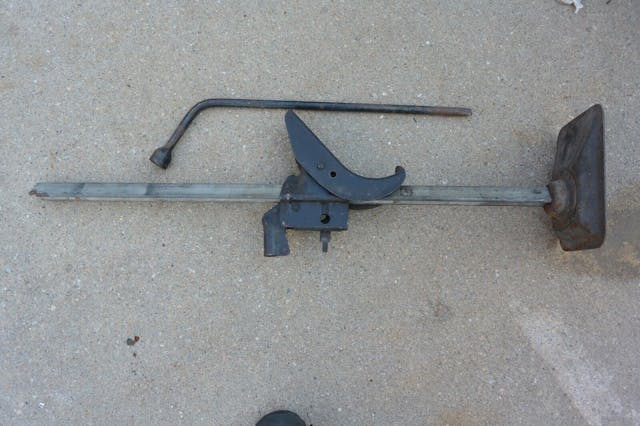
In a world of bumper covers, the thought of attaching a lifting mechanism to the exterior of your car and using it to lift the vehicle is some type of strange fever dream. It wasn’t always that way though. Flat tires have been around longer than the automobile and the need to pick up the car followed right along. Bumper jacks are good in concept but the lack of any safety catch or stabilization to keep from tipping over makes them treacherous to use. They still have utility in off-road situations but that can also make use even more dangerous.
Verdict: Keep as a reminder of how far we’ve come.
Brake pliers
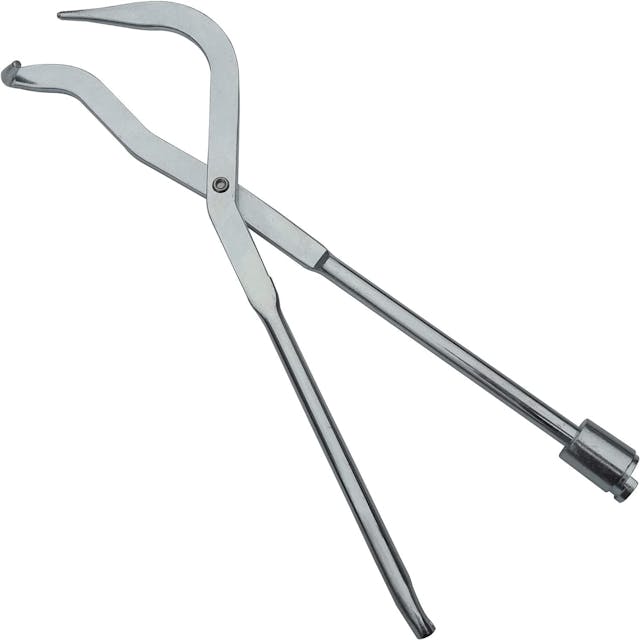
Somehow in the history of cars, there have been just two types of brakes commonly found behind the wheels: Drum or disc. Drum brakes can provide all the stopping power needed while also wearing like iron thanks to the enclosed and thus relatively debris-free nature of the design. That same design also has a handful of tension springs stretched carefully over small studs that can be serviced with groove-joint pliers and a screwdriver, but there are also brake pliers that rose and slipped from popularity right alongside drum brakes.
With modern materials and the relatively limited use of drum-brake cars, servicing drums has gotten less common to the point that while special tools can make the job easier it is only marginal and certainly not required.
Verdict: Keep them if you’ve got them but can likely pass if building your toolkit.
Growler
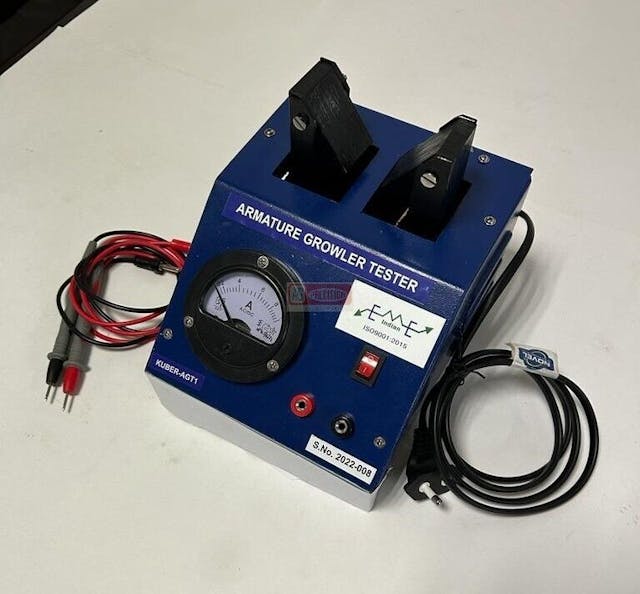
We aren’t talking about that curmudgeon of a mechanic who seems to only communicate in grunts and growls as the ratchet clicks to remove parts. No, the growler here is used to test the windings of a motor or generator. The armature is placed on a bed that flows alternating current into the windings. Using a ferrous rod to locate the magnetic field that will be created by a short makes for easy diagnostics. The price drop that came with the mass production and parts sharing between various models relegated these to hobby benches or the back room of specialist shops. Since rebuilding motors or alternators has become rare, these are practically a novelty.
Verdict: Keep if you’ve got the space, but often these find problems that are difficult to source parts to fix.
Vernier caliper

The increase in affordable precision has been quiet but amazing for at-home DIY projects. Good precision measuring devices used to be limited to the hands of skilled technicians and specialists in machine and fabrication shops. It took skill and training to properly use and read items like the vernier scale on calipers used in fabrication and precision machine work. Then digital calipers entered the market and the prices dropped year after year to the point that now a set of calipers accurate enough for most home use can be had for under $50.
Verdict: Use what you like and what works best for you. Regardless of what that is, be sure to keep any and all precision tools stored carefully to prevent damage.
Timing light
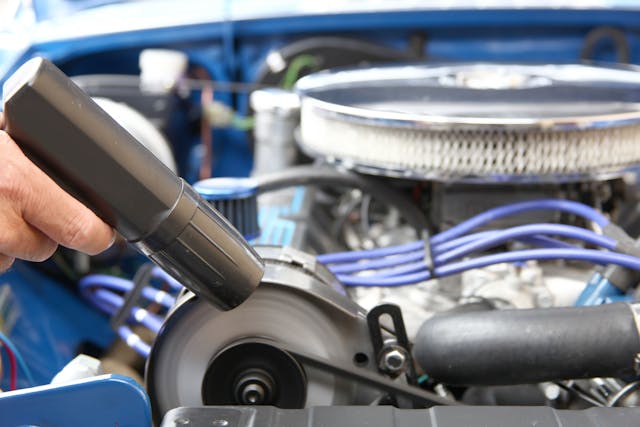
When we first wrote about tools that were fading from popularity last year, the comments section lit up with the suggestion that timing lights were left out. It’s been decades since a car rolling off the assembly line featured a tunable distributor, as the ignition is often now controlled by a computer working off data provided by a crankshaft or camshaft position sensor (or both) to control the firing of individual coils for each spark plug and cylinder. Adjusting the timing of the spark in the cylinder is changed with a laptop rather than a wrench and strobe light. Timing lights have been relegated to specialist shops and DIY garages.
Verdict: Keep it if it works, but consider a modern digital light if building a vintage-focused toolset as the features and capability have come a long way since the strobes of old.
Point file
Another from the ignition side of things. Even before computerized ignition was the advent of electronic or non-points-based discharge. Long gone are the days of having to swap a set of points on the side of the road or scratch off the char of the small faces to allow the coil to charge. A points file was handy for if or when a condenser would fail or the points would otherwise get crummy enough to not allow enough current through.
Verdict: If one is already in your glovebox, keep it for nostalgia’s sake and just in case. You never know who it might help.
Brake lathe or shoe arcing machine
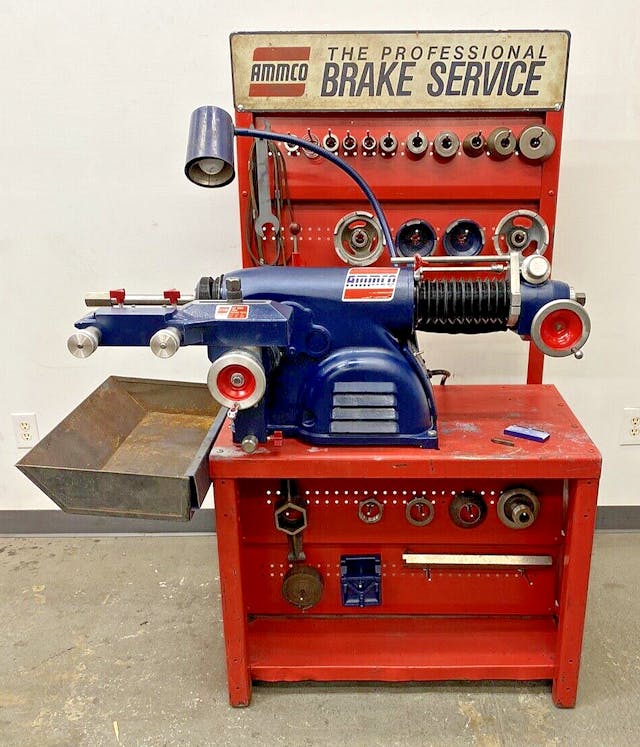
Drum brakes often have more swept area compared to disc brakes, but that additional friction material is useless if it is not in contact with the brake surface. The heat retention characteristics of drums can sometimes lead to warping that would previously be cleaned up by “turning” the drums to create a nice concentric surface around the shoes. While drums can still be found on modern cars the drums are often cast so thin that turning them is no longer an option and instead we must skip straight to replacement.
Shoe arcing machines do the same thing as brake lathes but set the radius of the friction material to match that of the drum. It’s critical for good brake performance on some vintage cars but has faded from popularity significantly due to the health concerns of grinding friction materials—especially asbestos.
Verdict: Save if you’ve got the space, or sell to a vintage shop if you don’t. We likely won’t see new versions of these tools made and they so help keep our cars safely going down the road.
***
Marketplace
Buy and sell classics with confidence
Check out the Hagerty Media homepage so you don’t miss a single story, or better yet, bookmark it. To get our best stories delivered right to your inbox, subscribe to our newsletters.
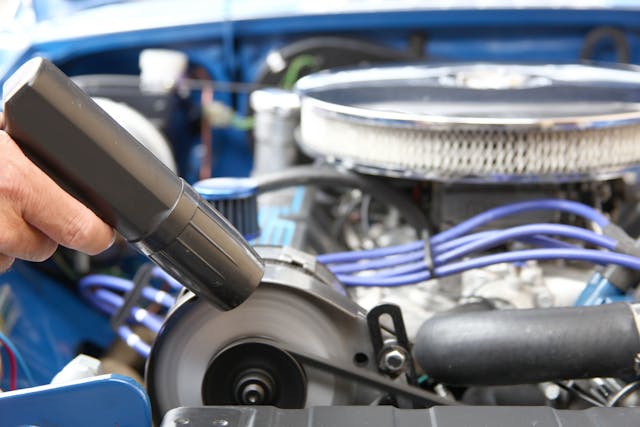
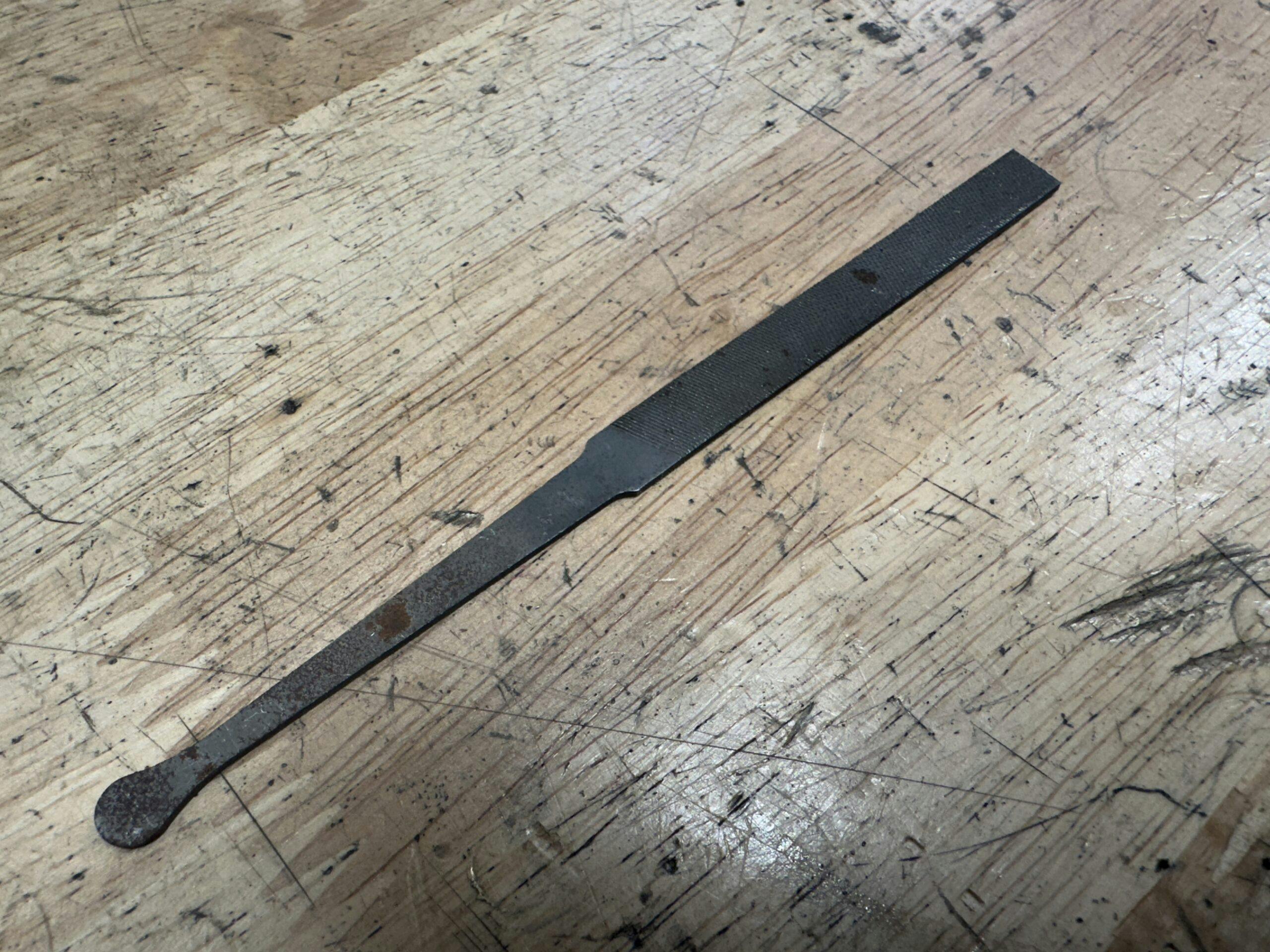
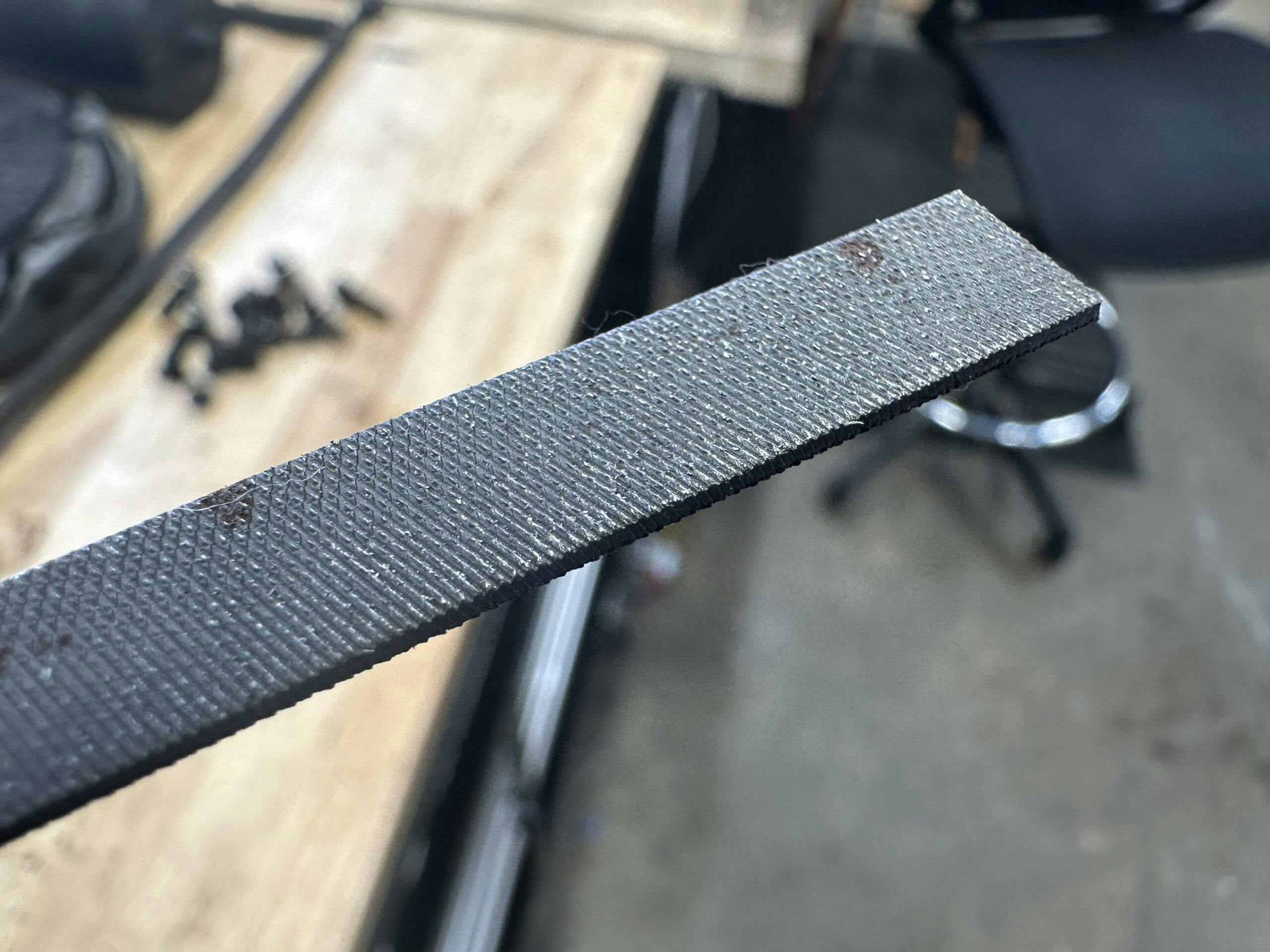







I have a tube of distributor cam lube. Consider how much you use. It will go into a time capsule to confuse the future.
when I was in Cuba before the pandemic I got talking to a guy that said they actually change the contacts on the points. Would have liked to see it done but didn’t have time as the beach was waiting
Dang! I still use them all!– Well, except the point file. I would rather use fine emery cloth or fingernail file.
I find the worst part of the scissors jacks is having to get down on my hands and knees to slide it into the right place, which is under the swing arm mount on the front, somewhere similar on the back. I have vernier calipers – two, both plastic with metric one side and imperial the other side. They mostly come in handy when I’m not sure of the size of a hole or bolt. I have one of those brake drum tools too, haven’t used it for years although I may have to at some point if I have to service the brakes myself rather than paying somebody else to do the dirty work. I don’t mind changing oil as long as the outside temperature is above freezing, but usually leave the brakes to a mechanic.
Most brake lathes also could turn flywheels, still very useful IMO.
IDK about the brake lathe or shoe arcing machine, Toyota, just this year, went to rear disc brakes on their small Tacoma pickup truck. And was the reason I bought a Colorado.
The ONLY things I don’t have on that list still is a Growler and a brake lath both of which I used to have back in the day.
Back in the mid sixties, in mechanics school, we used the shoe contour machine with no concern for the asbestos dust we were creating. It did make braking much better.
I have a ’70 Olds 442 and need and have all those tools except the brake machine , the Sun machine, and the Growler. I had the spark plug cleaner but my (not so) great nephew stole it. I still use the water-fill battery for authenticity and would like to have the little filler bottle that garages used to top-off the batteries. I’d also like to have the battery wrench that spread the ears on old battery cables. I had a few older Chevys and learned that putting a length of rubber hose over the spark tip would allow you to start the rear plug on a Chevy small block without dropping or cross-threading it. Did anyone mention how useful a vacuum gauge is for carb’d cars. I’m 81 and can’t crawl around cars much anymore but old cars have given me and my wife some great memories. She even helped me replace and install a small block in my ’67 Impala. Great gal!